Pricing Guides & Dictionary of Makers Marks for Antiques & Collectibles

COLLECTIBLE STEVENGRAPHS:
A Guide to the Beautiful World of Woven Silk Pictures
Join the most updated and complete collectibles research online - Learn more...
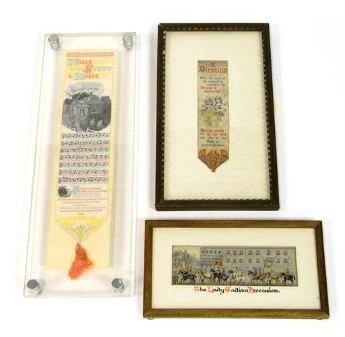 Stevengraphs are a type of woven silk picture that gained popularity in the late 19th and early 20th centuries. Originally produced by Thomas Stevens in Coventry, England, these intricate pictures depict a variety of subjects, from political figures to sporting events. Today, Stevengraphs are highly collectible and sought after by collectors around the world. In this article, we'll explore the history of Stevengraphs, how to collect them, and how to properly preserve and display them. Whether you're a seasoned collector or just starting out, read on to discover the beauty and value of these unique pieces of art.
Stevengraphs are a type of woven silk picture that gained popularity in the late 19th and early 20th centuries. Originally produced by Thomas Stevens in Coventry, England, these intricate pictures depict a variety of subjects, from political figures to sporting events. Today, Stevengraphs are highly collectible and sought after by collectors around the world. In this article, we'll explore the history of Stevengraphs, how to collect them, and how to properly preserve and display them. Whether you're a seasoned collector or just starting out, read on to discover the beauty and value of these unique pieces of art.
What are Stevengraphs?
Stevengraphs are woven silk pictures that were first produced in the mid-19th century by a company called Thomas Stevens. The company, based in Coventry, England, specialized in producing high-quality woven silk ribbons and other textiles. The company's founder, Thomas Stevens, realized that by using a Jacquard loom, he could produce intricate pictures on silk ribbons, which he called Stevengraphs. The pictures were usually of famous people, events, and landmarks.
Why are Stevengraphs Collectible?
Stevengraphs are highly collectible because of their intricate designs and historical significance. They provide a glimpse into the past, showcasing famous people, events, and landmarks from a bygone era. Many collectors are drawn to Stevengraphs because of their beauty and craftsmanship. The intricate weaving technique used to produce Stevengraphs is a testament to the skill and dedication of the weavers who created them.
Types of Stevengraphs
Stevengraphs come in a variety of types, including:
- Portraits of famous people: Stevengraphs depicting famous people were particularly popular in the late 19th and early 20th centuries. These include portraits of royalty, political figures, and military leaders.
- Events and landmarks: Stevengraphs depicting significant events or landmarks were also popular. These include scenes from battles, coronations, and other historical events.
- Sporting events: Stevengraphs depicting sporting events were also produced. These include horse races, cricket matches, and other popular sports of the time.
- Patriotic themes: Stevengraphs with patriotic themes, such as flags or military scenes, were also produced.
How to Identify a Stevengraph
Identifying a Stevengraph can be challenging, as many of them are not labeled with the artist's name or the date of production. However, there are a few key features to look for when trying to identify a Stevengraph:
- Quality of weaving: The quality of the weaving is a good indicator of whether or not a Stevengraph is authentic. Stevengraphs were produced using a specialized Jacquard loom, which produced a high-quality weave. Look for fine, detailed weaving with clear images and sharp lines.
- Subject matter: The subject matter can also help identify a Stevengraph. Many Stevengraphs depict famous people, events, or landmarks from a particular time period. Research the subject matter to see if it matches up with the time period when Stevengraphs were produced.
- Condition: The condition of the Stevengraph is also important. Look for any signs of wear or damage, such as fading, fraying, or discoloration. A well-preserved Stevengraph will be more valuable than one that is in poor condition.
Collecting Stevengraphs
If you're interested in collecting Stevengraphs, there are a few things to keep in mind. First, do your research to ensure that you're buying an authentic Stevengraph. Look for reputable dealers who specialize in antique textiles and can provide information about the history and provenance of the piece.
Second, consider the condition of the Stevengraph. The value of a Stevengraph is directly related to its condition. A well-preserved Stevengraph will be more valuable than one that is in poor condition.
Third, consider the rarity and desirability of the Stevengraph. Some Stevengraphs are more sought after than others, depending on the subject matter, the quality of the weaving, and the rarity of the piece.
Finally, set a budget for your collection. Stevengraphs can range in price from a few hundred dollars to several thousand dollars, depending on their rarity and condition. Determine how much you're willing to spend and stick to your budget.
Preserving and Displaying Stevengraphs
If you've already started collecting Stevengraphs or are planning to, it's important to know how to preserve and display them properly. Here are a few tips:
- Keep Stevengraphs out of direct sunlight, which can cause fading and discoloration.
- Store Stevengraphs in a cool, dry place, away from moisture and humidity.
- Handle Stevengraphs with clean hands or gloves to avoid transferring oils or dirt to the surface of the silk.
- Frame Stevengraphs using acid-free materials to prevent damage from acids in the matting or backing.
- Hang Stevengraphs away from heat sources, such as radiators or fireplaces, which can cause damage to the silk.
Conclusion
Stevengraphs are beautiful, intricate woven silk pictures that offer a glimpse into the past. They are highly collectible and sought after by collectors around the world. If you're interested in collecting Stevengraphs, do your research, buy from reputable dealers, and consider the condition, rarity, and desirability of the pieces you're interested in. With proper care and storage, your collection of Stevengraphs can be enjoyed for years to come.
Unlock the true value of your collection with our comprehensive research guides from identifying makers' marks to appraising all kinds of antiques and collectibles, including items featured in this article.
Our up-to-date information will give you an accurate understanding of your items' worth. Don't miss out on this valuable resource - visit our research tools today!
In addition to some examples shown below on this page, you can also search our price guide for your own treasures.
Examples of related items from our Price Guides
-
 FRAMED STEVENGRAPH PICTURES. Silk pictur
[more like this]
FRAMED STEVENGRAPH PICTURES. Silk pictur
[more like this]
-
 (3) STEVENGRAPHS, TO INCLUDE: "SIGNING T
[more like this]
(3) STEVENGRAPHS, TO INCLUDE: "SIGNING T
[more like this]
-
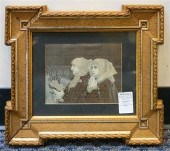 WOVEN SILK STEVENGRAPH OF 'LES RAMEAUX'
[more like this]
WOVEN SILK STEVENGRAPH OF 'LES RAMEAUX'
[more like this]
-
 FRAMED SILK STEVENGRAPH OF 'HOME SWEET H
[more like this]
FRAMED SILK STEVENGRAPH OF 'HOME SWEET H
[more like this]
-
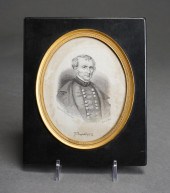 SWISS SILK MANUFACTURER STEVENGRAPH WOVE
[more like this]
SWISS SILK MANUFACTURER STEVENGRAPH WOVE
[more like this]
-
 HORSES IN ART, VARIOUS MEDIA INCLDG. STE
[more like this]
HORSES IN ART, VARIOUS MEDIA INCLDG. STE
[more like this]
-
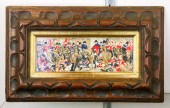 STEVENGRAPH SILK WOVEN PICTURE OF A BATT
[more like this]
STEVENGRAPH SILK WOVEN PICTURE OF A BATT
[more like this]
-
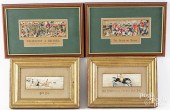 FOUR STEVENGRAPH NEEDLEWORKSFour Steveng
[more like this]
FOUR STEVENGRAPH NEEDLEWORKSFour Steveng
[more like this]
-
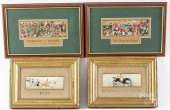 FOUR STEVENGRAPH NEEDLEWORKS<br>Four Ste
[more like this]
FOUR STEVENGRAPH NEEDLEWORKS<br>Four Ste
[more like this]
-
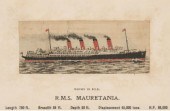 Three Stevengraph woven silk postcards w
[more like this]
Three Stevengraph woven silk postcards w
[more like this]
-
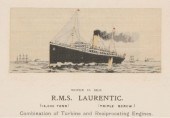 Four Stevengraph woven silk postcards wi
[more like this]
Four Stevengraph woven silk postcards wi
[more like this]
-
 Four Stevengraph woven silk postcards wi
[more like this]
Four Stevengraph woven silk postcards wi
[more like this]
There are many more auction results available to our members...





